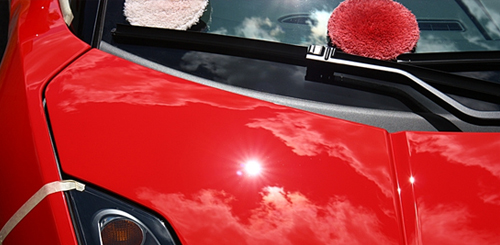Well it’s been 9 months now since I started using the Meguiar’s DA Microfiber Correction System, and 6 months since I helped launch the product with my product review and tutorial. Now that I have had even more time with it I figured I would give some feedback after a countless amount of paint correction details with it.
For those who have been following my work now for several years (and more), you know that I specialize in heavy paint correction and Restorative Details as opposed to the quick reconditioning work. Given this, I do a tremendous amount of heavy compounding and defect removal and therefore require products and techniques that work well under demanding conditions.
With this in mind, one might assume that much of my work is done by a rotary buffer, but actually the opposite holds true…I haven’t used the rotary for compounding in 9 months!!! Sure I still use it regularly for finish polishing, but for the heavy stuff, using the D/A polisher is where it’s at right now with the current technologies available in pads and compounds.
So what makes it so good?
When compounding in particular, you’re typically looking for the right combination of 3 key elements…how heavy of a cut can you achieve (correction rate), how quickly you can achieve that level of correction, and how fine of a finish you’re left with. So if you have a product or process that provides fast and heavy cut, but leaves a bad finish that will require 2 or more finishing steps to achieve pure clarity, then it doesn’t do you much good (unless you simply like to spend lots of unnecessary finishing time).
When we look at the MF Cutting Disc in particular when teamed up with the proper backing plate (backing plate choice makes a huge difference, but that’s another article) and compound (Megs D300 or M105), you can get a seriously high correction rate, WITH a fast cutting process, and also WITH a fine finish. On most paints, you can’t come close to this same combination of all 3 elements with a rotary and either a wool or foam pad. Sure there are exceptions, but I’m talking about the majority of the time. And once you’re done with your compounding stage, you know that you’ll be able to go straight into your finish polishing process…be it via D/A or with rotary. The light haze that is leftover from the compounding stage is much easier to clear up than with swirling and hologramming from heavy cutting on the rotary.
So…what makes it so good is that you can achieve a high rate of correction, a quick rate of correction, and a fine finish in your compounding stage! It’s also versatile for the paint type you may be working with. By changing up pressure and machine speed, you can get the level of correction and finish that you desire depending on the type of paint and condition. Don’t be afraid to experiment a bit…more pressure, less pressure, down to speed 3.5, up to speed 5. It’s impressive sometimes what slight changes in your technique can do to the final product.
What about pad durability?
To me, this has been a huge plus in this system. Despite the fact that you need to use heavy pressure, and you’ll only use one or two pads for an entire car, these Microfiber Cutting Discs just keep going and going! I started off with just a few of the Cutting Discs just so I could use and abuse them to see how well they would last. Despite many compounding marathons and cleaning sessions, the pads hold up and maintain their high level of cut for much longer than you would get out of foam or wool. I’m still using some of my original testing pads 9 months later and they still maintain a high level of correction.
A few benefit highlights of the DA MF System:
- Edge correction is better, and safer than what you can achieve by rotary
- You go through fewer pads on a full correction job than you would with foam or wool
- Less taping is required since you don’t have the same risks that you’re faced with on a rotary
- Quicker finish polishing times after compounding with the DA MF system
A few drawbacks to the DA MF System:
- For best results, you need to frequently clean with compressed air
- Compressed air then leaves a dusty mess all over the shop
- Even though it still requires skills and ability to “read” paint types, the gap has closed between amateur and professional! (Good for the amateur, bad for the pro)
So in the 9 months that I have been using the Meguiar’s MF Cutting Disc and D300, not only have I come to like it even more, but it has also become my main method of compounding. When a product arrives on the market that completely changes a professional detailer’s methods and techniques, then it’s a safe assumption that the detailer is completely behind that product.
I don’t just see the DA MF pads as game changers…I honestly view them as evolutionary milestones in paint correction history. These will undoubtedly breed new technologies and offspring, and you can bet money on it that there are a lot of people working in labs right now to either catch up and / or follow in the direction that this system has taken us in.
Using the Meguiar’s MF Cutting Disc with M105 (for heavy cutting) on the ultra-hard Lamborghini paint
Condition of the paint before:
And after!
